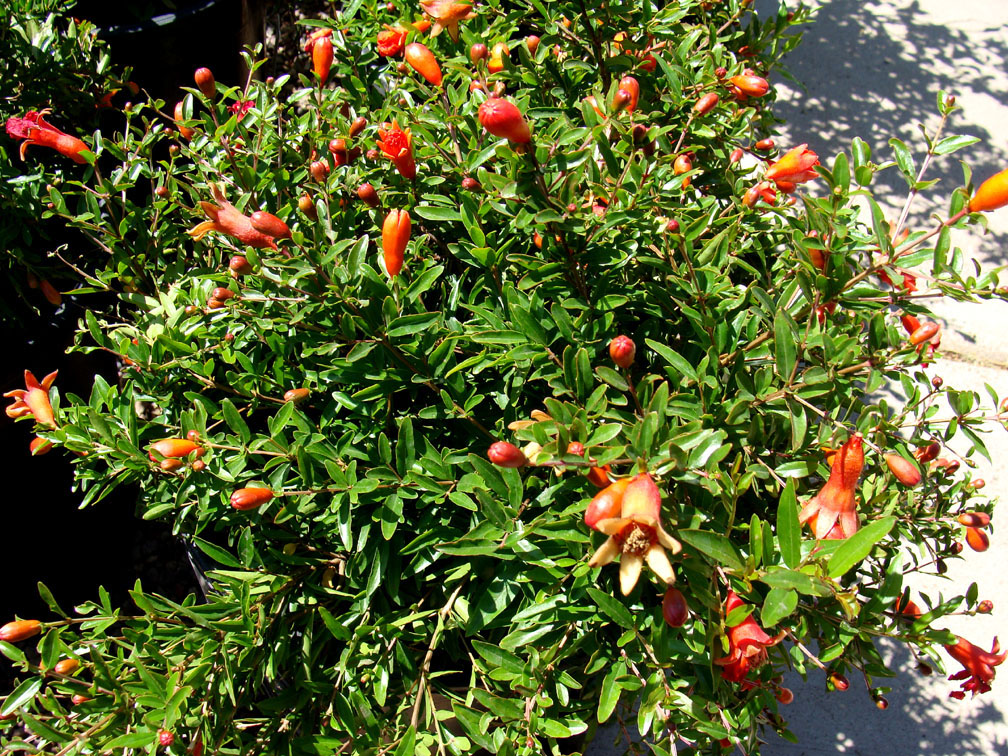dadima :

Morphology:
A shrub or small tree growing 5 to 10 m (16 to 33 ft) high. P. granatum leaves are opposite or subopposite, glossy, narrow oblong, entire, 3–7 cm (1.2–2.8 in) long and 2 cm (0.79 in) broad. The flowers are bright red and 3 cm (1.2 in) in diameter, with three to seven petals.Histology:
Red-purple in color, the pomegranate fruit husk has two parts: an outer, hard pericarp, and an inner, spongy mesocarp (white "albedo"), which comprises the fruit inner wall where arils attach. Membranes of the mesocarp are organized as nonsymmetrical chambers that contain seeds inside arils, which are embedded without attachment to the mesocarp.Containing juice, the arils are formed as a thin membrane derived from the epidermal cells of the seeds.The number of seeds in a pomegranate can vary from 200 to about 1,400.
Botanically, the edible fruit is a berry with seeds and pulp produced from the ovary of a single flower.The fruit is intermediate in size between a lemon and a grapefruit, 5–12 cm (2–5 in) in diameter with a rounded shape and thick, reddish husk
- » Classification and names of dadima
- » Synonyms and definitions of dadima
- » Drug Properties of dadima
- » Chemical Constituents of dadima
- » Standardization of dadima
- » Parts used and Dosage of dadima
- » Morphology and Histology of dadima
- » Distribution and Conservation of dadima
- » Cultivation of dadima
- » dadima in the market
- » Medicinal Uses of dadima
- » Researches and clinical trails of dadima
- » dadima in other sytems of medicine
- » Ayurvedic formulations with dadima
- » Images of dadima












